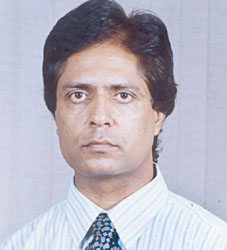Digital Marketing Simplified – How to Create Content
Digital Marketing Simplified – How to Create Content
By Rakesh Raman
In today’s information-driven world, most marketers realize the importance of content. But unfortunately few understand the meaning of content.
Marketers are under the wrong impression that a few sentences written on their website is content. Or their convoluted messages on social media sites is content. Or their product brochures with a slew of pictures and extreme wordiness is content.
Alas, all that is not quite true while content has a totally different significance.
Language is mere a tool to create content. And most will be surprised to know that content can be created even without language. You can convey your messages even without any words – with simple body gestures without uttering a single word – like Charlie Chaplin would do in his silent films.
Content Elements
Language is an important component of content. But it’s not the language the way most understand it. When it comes to content, instead of plain language, you need to write parlance or lingo used in a particular field for which you’re creating content. In this parlance and terminology, each word has a specific connotation, which is different from simple meaning of that word.
Then these words are wrapped in an engaging expression (and visuals in some cases) to create content, which is supposed to engage the target audience. This content can be a simple page on your brand website, name of a product, a film script, a book, a 140-character tweet on a microblog like Twitter, a mobile message, or a hyperlinked intro message on a social media site like Facebook or Linkedin.
Depending on the consumers, you need to create your content keeping in view many factors such as information structuring, flow of thoughts, quality of expression, uniqueness of the subject, communicative language, sentence construction, paragraph structures, transitions, reading relief, use of visual elements, and so on.
Content creation is not an easy job and only that person can create content who understands the entire ecosystem for which content is being created. By a simple rule of thumb, you can safely assume that there can be a dozen ordinary content writers in every street of a city, but it’ll not be easy for you to find a real content expert in the entire city.
A content expert is never dependent on the content delivery medium and is equally comfortable in creating content for different mediums and environments – including traditional, digital, and unconventional. The examples of unconventional form of content can be the brand messages on blimps or script for a puppet show to engage the target audience.
Creative Content
Today, millions of content suppliers deliver nonstop streams of information on consumers’ frontend devices such as mobile phones, computers, TVs, and so on. As a result, consumers are already facing an information overload.
In the ongoing content clutter, marketers are struggling to create unique content that could attract buyers and other stakeholders toward their brand messages.
Marketers know that staid content including traditional brand messages, pictures, and videos are not able to attract the consumer eyeballs. Conventional content and brand messaging models have failed to deliver desired results.
So, there is a need for marketers to create and deliver unique content to attract more consumers and enhance their engagement with the brand. This is the creative content category, which uses engaging techniques like fiction, cartooning, illustrations, animations, short films, and so on for brand communications.
Agreed, this type of creative content will be very expensive as compared to conventional brand information because there is a scarcity of creative skills. But brands that want to stand out in the clutter have no other option but to use such content for all their brand communications.
Content Creation Process
As content creation is a multi-dimensional activity involving consumer behavior, language, expression, medium, timing, and a host of other factors, it’s not a walk-in-the-park kind of job.
However, companies that believe in the power of content for their brand promotions, should create a process for content creation and its delivery.
To begin with, you can create a content style guide for your company. It will include language rules that your company will follow, type of fonts separately for print and digital media, corporate colors, and so on.
Initially, you should focus only on the basic content that should clearly communicate your brand’s strengths and its utility for the buyers. Later, you can decide about the creative content for your brand messages.
The objective of making the content creation process is to produce quality content for your brand and keep your website and social media pages fresh. The process will also include the flow of information from your marketing team to the content management team.
When an activity happens in your company, your marketing team should quickly supply the raw information including text, pictures, etc. to the content team for creating engaging content for traditional as well as digital media.
The activity can be your participation in an event, new product launches, customer case studies, CEO’s message for the buyers or employees, a press release about a new senior-level appointment in the company, and so on.
It’ll always be better if you identify a few people in your company who have basic content skills, train them, and make them responsible for managing the entire content. They should also write blog items for your corporate blog to keep your website fresh with latest content about your brand.
Alternatively, you can hire an external content creation agency. But beware that there will hardly be a true content development agency in your entire city. And if there’s any, it’ll be exorbitantly expensive.
A quick-fix solution can be to hire the services of a content consultant who has demonstrated credentials in the field of content creation in the local as well as international markets. The consultant can create the content management processes for your company and train your in-house team.
While good content is like oxygen for the survival of your brand, you should earmark sufficient budget for content creation activity. And that is the whole point.
By Rakesh Raman, who is a government’s National award-winning journalist and social activist. He has formed an environment-protection group called Green Group in Delhi. Earlier, he had been associated with the United Nations (UN) through United Nations Industrial Development Organization (UNIDO) as a digital media expert to help businesses use technology for brand marketing and business development. He also runs a free school for deserving children under his NGO – RMN Foundation.














